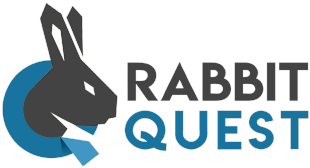Effective employee communication: Navigating the path to engaged wellness participation
You've rolled out an amazing vitality program, it's the talk of the office... for about a day. Then, crickets. Sound familiar? We get it. As HR managers, you're the captains of workplace culture and employee engagement. And guess what? The key to turning your next wellness initiative into the office's new favorite thing is... drum roll please... top-notch employee communication!
Time to read: 5 minutes
So, how do you get everyone on board and enthusiastic about health and wellness, not just at launch but for the long haul? The secret sauce is in the way you talk the talk. Let's dive into some nifty communication strategies that are more than just sending out an email blast. Are you ready to become the wellness whisperer of your office? Let's get started!
To ensure your wellness initiatives aren't just launched but embraced, let's delve into strategies that make your communication efforts fruitful.
1. Tailored messaging: One size doesn’t fit all.
-
Know your audience: As an HR manager, you know that the finance team might not be thrilled by the same messages that excite the creatives. Dive into the specifics: what drives your sales team might be different from what your IT folks need. Tailor your communications to fit various departments, roles, and even age groups. This isn't just about sending emails; it's about crafting messages that click with each unique audience in your organization.
-
Segmentation is key: Consider creating segmented mailing lists or targeted messages on your internal platforms. For younger employees, maybe a quick, catchy message on your social media-like internal platform works best. For others, a detailed email or a flyer in the break room might be more effective.
2. Multi-channel approach: Diversify your communication platforms.
-
Mingle mediums: Don't just rely on one method. Mix it up! Use emails for detailed communication, intranet posts for quick updates, physical bulletin boards for constant visual reminders, and departmental meetings for that personal touch. This ensures everyone, from the tech-savvy to the traditional, gets the message in a format they’re comfortable with.
-
Digital alerts: If your company has a health app or specialized communication tools, use them to your advantage. Send out friendly competition alerts, progress updates, or even wellness tips. These little nudges can keep the program top of mind and integrate seamlessly into your employees' digital routine.
3. Encourage two-way communication: It’s a conversation, not a monologue.
-
Feedback loops: The best programs evolve based on participant input. Set up regular channels for feedback; it could be as simple as a monthly survey or a suggestion box in the cafeteria. Hold Q&A sessions in team meetings or set up an anonymous online forum. When employees feel heard, they're more likely to engage.
-
Act on feedback: It’s not just about collecting feedback, but also about acting on it. Show your team that their opinions matter. If several employees suggest more yoga classes, for example, try to incorporate that. When they see their input leading to real changes, it reinforces their value in the organization and the program.
4. Real stories, real impact: People relate to people.
-
Employee spotlights: Nothing beats a good story, especially when it's about someone you know overcoming challenges and achieving their wellness goals. Share these stories in your internal newsletters, on the intranet, or even in short video clips. When employees see their peers benefiting from the program, it not only humanizes the initiative but also serves as a powerful motivator.
-
Storytelling sessions: Why not host a casual 'Coffee and Stories' session where participants can share their experiences? These can be in-person or virtual meetings where employees talk about their wellness journeys, the challenges they faced, and how they overcame them. This builds community and shows the real-life impact of your vitality programs.
5. Transparent objectives and milestones: Clear goals, clearer engagement.
-
Set the vision: Be clear about what the program aims to achieve. Whether it's reducing stress, improving physical health, or building a sense of community, make sure everyone understands the 'why' behind it. This can be done through kickoff meetings, detailed guides, or even an engaging video explaining the program's goals.
-
Celebrate milestones: Regularly acknowledge and celebrate the progress made, not just at an individual level but also as a team or even the whole company. This could be anything from hitting a collective step count to the number of meditation sessions completed. Celebrations can be simple shout-outs in a meeting, feature in your company newsletter, or even small rewards.
6. Leadership participation: When leaders walk the talk.
-
Lead by example: It’s incredibly motivating to see company leaders actively taking part in wellness initiatives. When CEOs, managers, and team leaders are seen attending yoga classes, participating in step challenges, or sharing their wellness stories, it sends a strong message about the company's commitment to employee health.
-
Leadership spotlights: Feature your leaders in your communication channels talking about their involvement in the program. Maybe your CEO shares their morning running routine, or a department head talks about how mindfulness meditation has improved their focus at work. This not only encourages participation but also helps in breaking down hierarchical barriers and humanizing leadership.
Remember, it's not just about what you communicate, but how you do it. Tailored, clear, and personal touchpoints can transform your vitality program from just another office initiative to a shared journey of health and well-being.
As you embrace these strategies, watch as engagement surges and your workplace becomes a hub of energetic, motivated, and health-conscious individuals.




